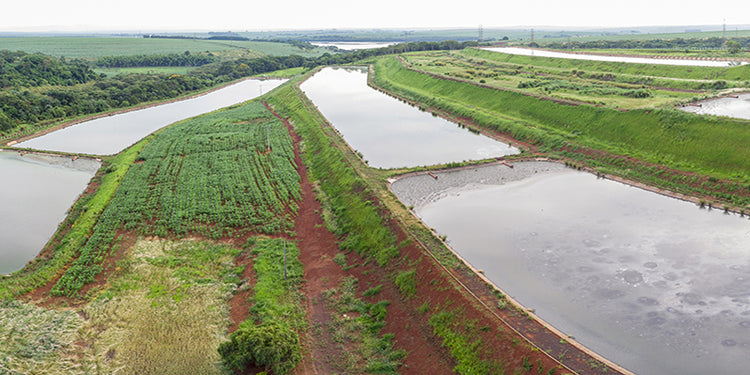Over the years, agriculture has become more efficient, meaning we can feed more people on fewer resources, less waste, and fewer emissions. According to the USDA, land usage has decreased by 24% and labor by 75% over the last 65 years. As the population continues to grow, communities are starting to encroach closer to farmland. Most folks like the idea and serenity of the countryside, but not all appreciate the smell that can come along with it. Just as land and labor efficiencies have advanced over the years, odor management has followed suit in the development of new technologies.
Agricultural lagoons
The main purpose of a lagoon is to store and treat organic waste found in wastewater. There are a couple of different types of lagoons, including anaerobic and aerobic lagoons. Most farms use anaerobic lagoons, as they require fewer input costs and work well in rural locations. Two layers of waste are formed in anaerobic lagoons: the sludge layer and effluent layer. The sludge layer is the portion of heavy organic particulates that sink to the bottom. The effluent layer is the water on top, which is extremely important in the regulation of pH and proper degradation of organic matter. In addition to primary lagoon uses, the effluent has additional applications. For example, portions of this layer can be pumped off to use in flush systems in barns or as fertilizer on fields (Texas Animal Manure Management Issues).
How do lagoons work?
Treatment of anaerobic lagoons involves stabilization of the waste, which is a two-step process (EPA).
#1 - The acid phase: Acid production must take place to produce acetate, propionate, and lactate.
#2 - Methane production: The acids mentioned previously are converted to acetate and are then used to produce methane.
Methane production is the end result of waste stabilization. If volatile fatty acids are found in high concentration, the lagoon is not working properly and requires further treatment to stabilize pH.
AgriGro’s Innovative Technology
Indigo® is a wastewater treatment designed to reduce odors and enhance biodegradation of organic matter found in lagoons. This state of the art technology enhances methanogenic bacterial production to control odors and stabilize lagoon organic matter.
While most lagoons used in agriculture are anaerobic, this product is extremely versatile and can be used in both anaerobic and aerobic lagoons. With Indigo®, you will see a difference in odor within only 48 hours after application. Increase the lifetime productivity of your lagoon with the help of Indigo®.
 Learn More About Indigo®
Learn More About Indigo®
SOURCES: Wang, S. L., Nehring, R., and Mosheim, R. 2018. Agricultural Productivity Growth in the United States: 1948-2015. In United States Department of Agriculture- Economic Research Service. Retrieved from https://www.ers.usda.gov/amber-waves/2018/march/agricultural-productivity-growth-in-the-united-states


